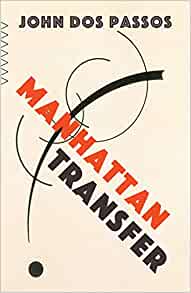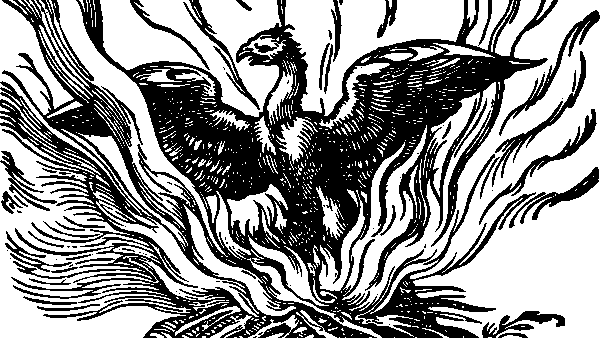When I moved to New York City as a 22-year-old, I immediately loved the chaotic, frenetic energy of the place. I’d grown up in London, another big city, but this was something else.
Manhattan seemed like a place where it was possible to be anything, a place of extremes, a place where everything was in flux. It also struck me as a harsh place with a razor-sharp competitive edge, where everyone was striving to get ahead and yet so many were left behind. It was possible to win big, but it was also possible to fall hard, and many accomplished both in quick succession.
I was amazed at how well John Dos Passos captures this energy in his 1925 novel Manhattan Transfer. Much has changed in a century, but the Staten Island ferry was instantly recognisable from his description, which opens the book:
“Three gulls wheel above the broken orange-rinds, spoiled cabbage heads that heave between the splintered plank walls, the green waves spume under the round bow as the ferry, skidding on the tide, crashes, gulps the broken water, slides, settles slowly into the slip. Hand-winches whirl with jingle of chains. Gates fold upwards, feet step out across the crack, men and women press through the manure-smelling wooden tunnel of the ferry house, crushed and jostling like apples fed down a chute into a press.”
OK, the manure-smelling wooden tunnel was gone by the time I arrived in the early 2000s, but everything else is remarkably familiar.
It’s also one of those opening paragraphs that, when you look back at the end of the novel, you realise contains within it the whole of what is to come. Manhattan Transfer is a patchwork collage of different stories, some of which collide and many of which don’t. It can be hard to follow all the threads sometimes, but this opening image of the ferry sets the stage perfectly.
First, this scene positions New York as a place of arrival. Many of the characters are fresh off the boat from Europe; others are more long-standing New Yorkers but still carry the old country with them in their accents, their habits, their attitudes. They arrive and immediately get caught up in the crushing and jostling, and some make it big while others fail spectacularly. Even arriving from closer to home can be tough, as the luckless Bud Korpenning discovers in the years of degeneration from an upstate New York farm worker to an unemployed, homeless, broken man who ends by jumping from the Brooklyn Bridge.
Second, it’s significant that we see the ferry not from on deck, but from down in the roiling water, amid the broken orange-rinds and spoiled cabbage heads. Manhattan Transfer does involve some privileged characters living the high life in Jazz Age Manhattan, but it also shows a lot of the underside of the city, with a lot of characters scudding around at the margins, struggling to survive. And even the rich people seem lost, alienated, perpetually dissatisfied despite everything they have.
Third, there’s that wonderful image of the emerging ferry passengers “crushed and jostling like apples fed down a chute into a press”. So many of the people in Manhattan Transfer are like those apples, just tumbling down a chute and getting caught in the jaws of the press. They all strive to control their lives but seem to be at the mercy of Fate, or perhaps the City itself. Even those with more wealth and power seem to be tossed around like those heaving cabbage heads in the water. Good things happen and bad things happen, and it all seems like a lottery. Fortunes are won and lost. Hard-working people fail, and lazy people get rich, or sometimes it happens the other way around.
As a perfect illustration of this randomness of fate, fire is a recurrent motif in the book. There’s always a building burning somewhere, and the characters are always fascinated and stop to watch the drama. And later on, a couple of fires kill one character and severely injure another. Although fires of course have causes, those causes are often obscure. They often appear to their victims to have come out of nowhere, to take away a lifetime’s wealth or even life itself before they know what’s happened to them. Given what Dos Passos seems to be saying about fate, it’s an apt choice of recurring image.
Perhaps it’s this lack of agency that makes Manhattan Transfer a little hard to read at times. Or perhaps it’s the huge cast of characters and the fragmented narrative. Another problem (although I’m sure it’s deliberate on the part of Dos Passos) is that a lot of the dramatic action happens off-stage.
For example, two of the main characters, Jimmy and Ellen, seem fated for a great romance. Jimmy is besotted with the beautiful actress Ellen, but she’s in love with someone else, and he is forced to play the role of a friend, always seeming on the point of declaring his love but never quite managing it. And then, suddenly, the narrative jumps forward a few years, and we meet them as a married couple with a baby. We never get the story of how they finally got together, except in a few frustratingly vague reminiscences. We just join up with them again for the slide into disillusionment and divorce, and even that is not told in a particularly dramatic way.
There are lots of other moments, too, when Dos Passos holds back the drama and gives us instead a lot of drinking and talking and ennui. And with so many characters appearing in such a fragmented, frequently switching narrative, it’s hard to remember sometimes exactly who’s doing the drinking and talking.
Nevertheless, as a portrait of a city at a particular point in time, and as a literary experiment that still feels fresh today and must have been ground-breaking a hundred years ago, Manhattan Transfer is definitely worth reading. There are some beautiful descriptions of urban life, some heart-breaking vignettes, and some great insights into a flawed, unequal, chaotic and magnetic city.
If you liked this review and would like to hear more from me, please sign up for my monthly newsletter. One email a month, and you can easily unsubscribe if it’s not for you.





There are 13 comments
Hi Andrew – Hope you and Genie are fine. Somehow I have lost your email. Can you share with Genie. All the best – Roni
Hi Roni, Good to hear from you! No problem, I told Genie and she said she’ll email you. Happy New Year!!
When I saw your post title I first thought it was going to be about the band 😀 Sounds like an interesting book that captures the city well for the time.
Haha, now you make me want to look up their music – I don’t know it. Will head over to YouTube and listen to some 🙂
When I was fifteen, living in Rochester, NY I needed a book that could only be found at the University of Rochester library. I marched in and asked for help finding the book. Fortunately, the librarian took pity on me and lead me to the book. I read the chapter I needed and was ready to leave. On the table was a required reading list for college freshmen. I copied the list and eventually read every book on the list. One of the books was Manhattan Transfer. I did not go on to become an English teacher or lawyer as had always been my dream. I attended Monroe Community College’s two-year nursing program and didn’t receive a BSN until twenty years later. However, I did move to New York City and work at Bellevue Hospital for nearly ten years. I walked the streets, lived on the lower East Side, spent much of my time in Greenwich Village, marched against the Vietnam War and to an extent became a voice for patients who had no voice. John Dos Passos book Manhattan Transfer shaped my politics. His descriptions of the poor awakened and sustained my compassion for those with little. I feel he shaped in large measure who I am today.
Hi Darsha, Thanks so much for sharing your story! It’s amazing, isn’t it, how books can play such a large part in our lives. I can see how this depiction of New York would have had such an effect on you, and it was wonderful to hear about the role that Manhattan Transfer played in shaping your life and choices.
I loved this book for exactly the reasons you describe here.
Yes, I’m glad I (belatedly) discovered it!
Great book and an insightful review. USA Trilogy also terrific. Astonishing that Dos Passos is not more widely read and taught.
Hi Robert, Belated thanks for this comment, which I somehow missed back in the summer. Janet’s recent contribution alerted me to it. I agree entirely about Dos Passos being unfairly overlooked compared with his contemporaries, and I’m glad to hear you liked the U.S.A. trilogy, which I still haven’t picked up but would like to try.
Hello, I picked up Dos Passos because I enjoy reading about the early 20th century and especially in France. I found the compilation Novels 1920-1925 by Dos Passos in the library and read it through, ending with Manhattan Transfer, which I just finished and closed. Of course, the writing is absolutely beautiful, so descriptive and filled with wonderful characterizations. It captures New York City as a place, as you described, fraught with the possibility of great things to come but that don’t end well, whether you make it (Baldwin, Ellen) or don’t (almost everybody else!) I wasn’t sure I even understood it, so thank you for sharing. You summed it up well. I agree with Robert’s comment about Dos Passos. Why isn’t he more famous and enduring? In my community library, there isn’t even a copy of USA, but the number of books by Hemingway fills up a whole shelf. I don’t think I’m done with Dos Passos yet at all. I ordered U.S.A. from Half Price Books and am waiting for it to come in the mail…
Hi Janet, Thanks for your comment. It’s interesting that you mentioned the U.S.A. trilogy because I’ve been thinking of reading that one myself. I agree, Dos Passos doesn’t get as much attention as I think he should. His work is well known, of course, but it’s definitely overshadowed by the likes of Hemingway, Faulkner, Steinbeck, etc.
I’m about half way through this novel. it’s the first book i’ve read by the author and I almost certainly will not read another. I’m finding this book so hard to read that I started keeping notes about the characters. as I read elsewhere there are many characters….too many for me. when reading becomes a chore, it’s not worth the effort. clearly the author is first rate; it’s just not my type of reading. I read elsewhere that the USA trilogy is considered my many to be easier to read although complicated. well I gave the author a try. thank you.